
Bills are authored by a legislator and given to the Secretary of the Senate or Assembly. It receives a
number and becomes a public document. Co-authors are any member of either house, who with agreement of the
author, may add their name.
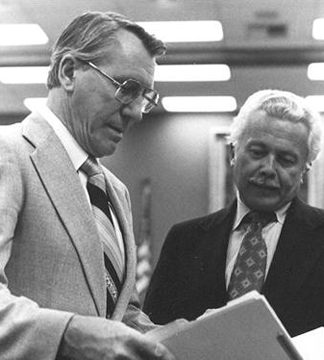

Sponsors are: Legislators, private parties and organizations who developed the bill.

Legislative Counsel drafts bills, amendments and prepares a digest (summary) of bills, provide legal opinions,
and provides representation in legal proceedings.

Bills affecting the public peace, health, safety or authorize an expenditure of public funds require a 2/3 vote.
They become effective immediately upon enactment while other bill have to wait until the beginning of the
following year.

Analysis of all Bills is prepared by committee and/or floor analysis staff prior to hearing the bill in
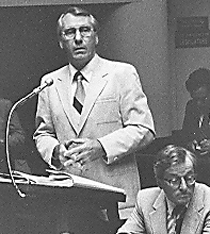
committee. It explains how a bill would change current law and sometimes mentions major interest "groups"
support or opposition.

Legislative Counsel's Digest is a brief summary of the changes the proposed bill would make to current
law. The digest is found on the front of each printed bill.

Amendments must be germane to the subject matter already being considered in a bill. The Legislative
Counsel opines germaneness, but the matter is subject to final determination by the full Assembly or Senate.

Daily File is a publication produced by Assembly and Senate respectively for each session. It provides
information about the bills to be considered at upcoming committee hearing and bills eligible for
consideration during the next scheduled Floor session.
First Reading. Each bill introduced must be read 3 times before final passage. The first occurs when the
measure is introduced. The second occurs after a bill has been reported from committee and Third Reading
when measure is up for final passage.
Conference Committees are usually composed of three legislators (generally two from the majority party,
one from the minority party) from each house who meet in public session to forge one version of similar
Senate and Assembly bills. Their version must be approved by both Assembly and Senate.
The Journal is the official chronological record of the proceedings in each house. At the end of session,
the journals are certified and bound.
When a bill passes both houses. After receiving a bill the Governor has twelve days in which to sign or veto.
If neither is performed the bill becomes law without the Governor’s signature.
If it is vetoed the house may act on it immediately or place it on the “unfinished business file.” The
legislature then has 60 calendar day, joint recesses excluded, to act. If they do not take action, the
measure is deleted from the file and the veto is effective. There are exceptions but this covers the
majority.
 Anatomical Gifts
Anatomical Gifts: I read an article in the paper about those waiting for body parts and the difficulty
doctors had getting permission from relatives to harvest them within the time frame in which they would
still be viable. It was possible at the time to get a donor designation on your drivers license however
it required a special effort and many relatives still objected. The doctors and others would not risk a
law suit.

I pleaded the case to the Rules Committee and they allowed me to create and Chair a "Select Committee
on Anatomical Gifts." We hired an attorney, named Kathleen Norris, then living in Newport Beach as the
support staff member. To simplify the method of becoming a donor I carried a bill that required the DMV
to include an explanation of, "why become a donor," and a little red "sticky" dot that could be applied
to their drivers license when they received it. Another bill removed the threat of doctors of being sued
by relatives trying to prevent them from following the instructions of the donor.


There was a group of parents of donors as well as recipients who were attempting to change the law. We
became involved and formed a group called "Anatomical Transplant Association." One of our members was a
beautiful young lady who was one of the first heart transplants and was celebrating her fifth year. The
organization no longer exists but it was a beginning. As public awareness and the ability to harvest and
transplant has progressed there are now many support groups. As public awareness and the ability to harvest and transplant has progressed and there are now many
support groups.

A better method of incarcerating juveniles. My Chief of Staff, Jack Germain, introduced me to an alternate
method of handling juveniles convicted of felonies. To learn more we visited one of the CYA, California
Youth Authority, (Now known as, the California Division of Juvenile Justice.) facility located at Ione,
California. One of their main products seemed to be the creation of gang members in the event they didn’t
belong to one before they were locked up. In the beginning Ione had been a facility for wayward, homeless
youths and was centered on a farm where they produced most of their needs plus surpluses to sell. However,
it had been decided years before by the politicians that children shouldn’t have to work, so they were only
schooled. The CYA problems continued to grow until in the late 1990’s when it was replaced by the California
Division of Juvenile Justice in an effort to clean up the disgrace.

The alternate was a private enterprise based in Arizona called, Vision Quest. (I just searched for it on
the web without success.) Convicted youths were sent to them by the Arizona Courts and Vision Quest was
asking for California to do the same. In Vision Quest they built and lived in tepees and those in each
tepee had to work together and help each other as if they were a family. After their basic training camp
they dismantled their tepees, loaded them on their mule drawn wagons with supplies and started on journeys
that lasted months and hundreds of miles.

Every day was a lesson in how, by working together they could achieve a common goal. Each was assigned
a mule or some other animal to care for and regular schooling was still conducted while they were on the
road. There were no gangs, just teams working together for a common cause.

Their recidivism was substantially lower than that of brick and mortar institutions and the annual cost
of was approximately two thirds that of the State’s. My bill didn’t make it out of committee.
California law did not recognize programs that were not conducted in a permanent brick and mortar site.
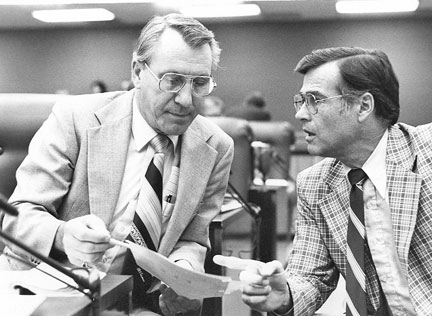

A problem that needed to be corrected was that race tracks did not provide living facilities, other than
the stables, for those who tended the horses. A prominent Senator had worked at a race track while in
school and loved horses and was a good friend of the track moguls. He carried a bill that would tap
State funds currently received from the race track to pay the cost of providing facilities.

The horse owners and race tracks are private enterprises and should pay the cost of housing their
help, not the State. It was a "gift of public funds" which is illegal. I was the only one who spoke in
opposition and lobbyists and the Senator’s personal power promoted the bill into law. There is no record
that the State ever furnished the funds to do likewise for the farms and orchards that use migrant laborer.

You want a State license to do business, too bad! The Governor had ordered all agencies to cut their budgets
and the results were that all applicants for real estate and contractor license were waiting months to
get licenses which was a financial handicap for many. This was in spite of the fact that the licensing
fees paid for all costs and their agencies did not require State funds. My bill required a temporary
license to be issued within 60 days. It passed.

Taking aim at a bill for a Los Angeles to San Diego Bullet Train. Going back 30 years, the bond amount at that
time for the proposed train was 1.25 billion. The bill didn’t go anywhere and neither did the train. But,
as I write, it was back on our November 4, 2008 ballot as a 10 billion dollar bond with a payoff cost of
20 billion over thirty years plus an ongoing estimated one billion a year in maintenance and operation costs.
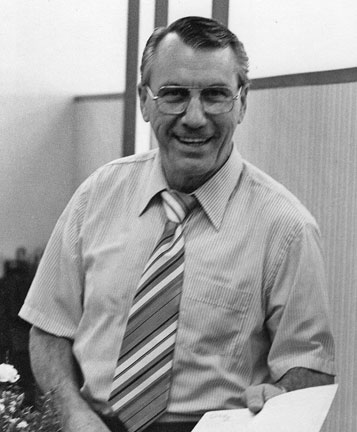

It bothered me that the office of the Lt. Governor had little to do particularly if the Governor was of an
opposing party. There were no significant responsibilities but it had a sizable budget. I proposed giving
choices to the voters of: 1. Eliminating the position. 2. Strengthening the position with additional
responsibilities and, 3. Have the Governor and Lt. Governors run as a team from the same party and
work together.

At the time Democrat Jerry Brown was Governor and Republican Mike Curb was the Lt. Governor. Brown made no
attempt to utilize Curb and Curb attempted to achieve something every time Brown left the State but without
success. Filling those positions with opposing parties achieved nothing except wasting four years of a Lt.
Governor’s time. Needless to say, my bill wasn’t going to get any backing from the other 119 legislators
who looked upon the Lt. Governor’s position as the next step in their political careers.

Requiring safety seats for kids under 40 pounds was passed because the bottom line phrase the proponents used
was, “Seat belts can’t secure small children and they become projectiles on quick stops.”

There was no required smog check and an out of state company wanted a contract to set up smog check stations
around the State. We voted it down in the Transportation Committee in favor of licensing auto mechanics in
order to create competition which would be lacking if the State regulated the price for a monopoly.

Another bill was to toughen the smog requirements with regular inspections. There was opposition to it and
speaking on the bill I summarized with, “We don’t let citizens dump garbage in our streets why should we
let them dump garbage in our air?” It passed but I question that my remark was the cause.

A hijacked bill. I held "Meet the Senator" meetings in various parts of my District. A man complained that
he owned a lot and he wanted to put a manufactured home on it but city and county building codes did not
allow that method of construction. This was in spite of the fact they were inspected under construction and
were legal to install in mobile home parks. So we drafted a bill that said a legally manufactured home that
had roof extensions called eves, any conventional roof and exterior wall coverings, was set on a continuous
concrete foundation and met set back requirements, could not be prohibited. It was such a good idea that
when I appeared at the Committee hearing there was an almost identical bill by a Democrat to be heard just
ahead of mine. It passed and mine was skipped because it was considered a duplicate although everyone knew
what had taken place. It would prove to be a popular bill and they and the author wanted the credit for it.
Just one of the dirty little games that can be played by a majority party.

But the really corrupt game at the time was "Workers" Compensation" and it continued for years until it was
"partially" fixed in 2002. Some Senate and Assembly committees, like Insurance, are called "Juice"
committees because significant issues, like "Workers" Compensation", can be milked for campaign
contributions from the Trial Lawyers, Insurance Companies, Manufacturers Association, Unions and
Contractors Association to mention a few. Any bills attempting to eliminate fraud and waste was met
by substantial contributions from all who felt their ox would be gored.

The Rules Committee selects the Committee Chair as well as the committee members so you can imagine the
legislators" competition for them as well a the Rules Committees influence over the issues they would
be voting upon.

The Chair of one of the juice committees went to jail for taking a bribe and his contributor went with him.
But, I felt what the FBI did was also a crime. They didn’t reveal the Chair had confessed which had turned
him into a felon and felons can’t serve as legislators. However, he continued to serve as the Chair of his
Committee. So, for a period of time our Federal Government had a Senator chairing one of the State’s most
important committees who would do anything they asked to shorten his sentence. They used him to nailed the
lobbyist who paid the bribe but it is frightening to think of the FBI secretly controlling a member of our
State Senate.

Minority Party leaders play the game with the Majority Party. An annual budget was very tight and the
"Entitlement Programs," "COLAS" (Cost Of Living Adjustments. See explanation below.) were set at a three
percent increase but the Legislators "Contingent Fund" was increase by twenty-five percent, over twenty
million dollars. How the fund will be used is not disclosed and it is loaded with perks.

I submitted a bill that would have held the "Fund" to the same percent increase as the Entitlement Programs.
First, when it was to be read I was told they couldn’t find it but when I wouldn’t accept that excuse they
found it. I asked for a "Roll call vote" so that anyone who voted against it would be on record. But, that
requires two other Senators to join in the request. Only one stood with me and the other thirteen Republican
remained in their seats with the Democrats. The regular voice vote was taken and of course the bill was
defeated without public knowledge of who voted against it. Earlier my Party Leader had suggested that I
not ask for a "roll call" vote. Draw your own conclusions.

Entitlements Programs are program that provides individuals with personal financial benefits to which an
indefinite, but usually rather large number of potential beneficiaries, have a legal rights whenever they
meet specified eligibility conditions.

It is difficulty to control the exact size of a budget deficit or surplus through the annual appropriations
process. The amount of money that will be required in the coming year to fund an entitlement program is
often difficult to predict in advance because the number of people with an entitlement may depend upon the
overall condition of the economy at the time. For example, unemployment benefits to be paid out will depend
upon the economy at the time and the level of unemployment.

The priorities of too many legislators run in the following order when considering how to vote: How will it
be viewed by the organizations that control campaign contributions; how will it affect their relationship
with the legislators who are sponsoring the bill; and always last, what would be best for all concerned?
Since they are all in safe voting districts (See Redistricting) they have little concerned about their
constituency. Their eyes are always on the next advancement in the legislative hierarchy, the next election,
or the next step up the political ladder to higher office.


Party time! President pro tem of the Senate, Jim Mills, arranged an Oktoberfest dinner party for us and our
spouses at the thirty-room Victorian mansion built in 1877 for local hardware merchant Albert Gallatin.
It was held in the rear area by the carriage house and the swimming pool. The weather was perfect, the dinner
was excellent and the entertainment was world class consisting of a champion Swiss band and yodelers.
The State of California purchased the house in 1903 to serve as a governor's mansion and many furnishings
remain from former governors. Listed on the National Register of Historic Places it is now used for public
and state ceremonies and is open to the public for guided tours. Ronald Reagan was the last to live there
briefly before he move to a rented a home. Jerry Brown, who lived there when his father was Governor, also
choose other lodgings in an apartment close to the Capital. Having toured it I agree it’s a wonderful piece
of our history but I wouldn’t want to live there.

An example of special interests killing a good bill for less than noble intentions was one I carried requiring
head gear and more heavily padded gloves and determining the winner by measuring boxing skills in order to
reduce the effect of multiple blows to the head. Irreversible memory loss, eye sight loss and cosmetic damage can
be the results of repeated hits to the head. If OSHA (Occupational Safety and Health Administration) found a
situation in a work place where workers were being stuck repeated on the head, sometimes hard enough to knock
them out, they would immediately order the situation corrected and fine those responsible.

At the time we had a worthless, corrupt Boxing Commission, which may still exist, funded by the State. It
turned out no one wanted the change because it wouldn’t have appeal for those who want to see blood and
knockouts. So when the bill reached the committee one of the Latino Senators spoke strongly against it,
pointing out how it would deny Latinos the opportunity to make a living. (He went to jail later for accepting
bribes.) Nothing was said about the managers, trainers and promoters who fed off of their eventual misery. The
committee voted decisively to kill the bill and it became obvious before the meeting was over that a
majority of the votes had been predetermined. So much for good government.

Dissatisfaction in the ranks. Some of my fellow Senators and I were unhappy with our Minority Leader who
had been elected in my first year. We were short six votes needed to unseat the Democrats and he was not
providing the leadership necessary to raise funds and to find and support viable candidates. Also, he
would keep the honorariums he received for speaking to business groups as the Minority Leader and not
use them for our Senate campaign slush fund. Some of us had complained but no one was doing anything.

Several of us were on the same flight from Los Angeles so I started getting signatures of those who would vote
to replace our Minority Leader with a person I’ll leave unnamed. (It wasn’t me.) There was no use calling
a meeting if we didn’t have the majority of votes committed. The following day I was only short one vote
and the Senator I was talking to said he would if we would promise him the position of Republican Whip.
It’s a title that meant nothing but it would look good on his resume. He was the only one that demanded
something for his vote so it didn’t surprise me when as a Congressman he was under investigation over his
wife’s employment and fund raising relationships with a lobbyist who had been convicted of distributing
bribes.

We called the meeting and voted the Minority Leader out and our choice in. I wish I could point out a
significant difference that it made but it gave some satisfaction to help dump a big time, smooth talking
and political self server.

There is an old, old saying, "There are two things you don’t want to watch being made, one is sausage and
the other is law." Nothing is truer and perhaps some of the experiences I’ve described will help you understand,
but the world’s greatest demonstration of planned chaos are the few days before the legislative deadlines to get
bills out of committee and on the floor or, passed and on their way to the other chamber. The problems begin
when bills have been allowed to sit in committee or introduced late. It is exacerbated when Committees fail
to have a majority present when bills are presented because, their committee members are presenting their
bills to other committees that are also short a majority because they are also out trying to get their bills
passed. And, some bills are introduced late or amended in order to take advantage of the chaos and hide
unnoticed benefits not included in the original bill.

1980 My second election. My opponent was an elected, Long Beach City official, serving in a secondary level
of government. We won again. It was also the year that the Federal Census required all States to balance the
population increase in each voting district by, "redistricting."

Redistricting and its affect. The State Constitution gives the drawing of the district lines to as few as 21
of the Senate 40 votes. The Majority Party uses that power to provide their party members safe reelection
districts by drawing the lines so they have more of their party’s registered voters than the opposition.

They maintain their majority by readjusting the lines every ten years.
Because they have no concern over being reelected they had become nonresponsive to the States" needs. As an
example, in 2009 our State deficit has grown to over 40 billion and they can’t agree on a plan.
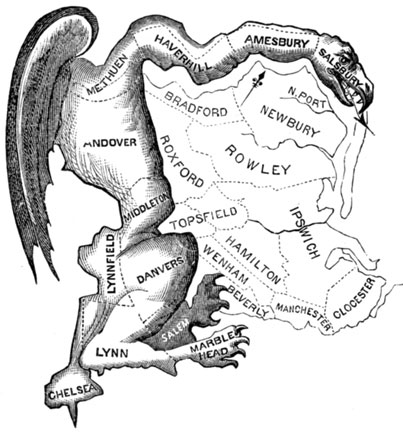

The 1812 cartoon on the right is a map of the State of Massachusetts voting districts after Governor Gerry
finish redistricting so his party would be guaranteed reelection. And, because it looked like a salamander
it was labeled, "Gerrymandering" and the name has stuck to all redistricting where the dividing lines protect
the party in power. California has districts just as distorted.

My district was Gerrymandered to make it safe for their party and my District number 31 was moved to a new
district miles north where an incumbent of my party resided. It left me with two years on my term but
without a district to represent.
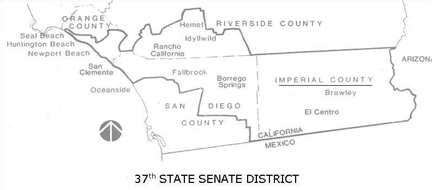

They had carved out a new 37th District starting at the Orange County line and Seal Beach it ran south along
the coast including Huntington Beach, Costa Mesa, Balboa, Newport Beach, Laguna Beach, San Clement, Camp
Pendleton, part of Riverside County, the northeast half of San Diego County and all of Imperial County.

Its shape was determined by including all of the Republican voters possible in order to make the surrounding
districts safe for Democrat candidates. But the old District in Orange County had been even numbered and by
changing it to an odd number they forced the current Republican Senator out of office because his four year
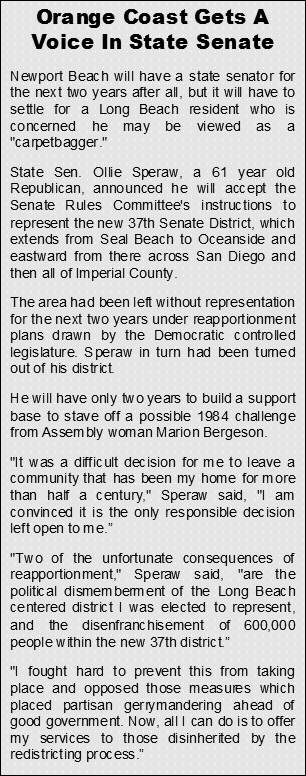
term was up and elections for odd numbered districts Senators wouldn’t take place for two years. The new
district also covered a much larger area and included many citizens who had been in other districts. They had
been disenfranchised and left without Senate representation for two years until the next election.

I appeared before the Democrat dominated Rules Committee and pointed out that since it was a safe Republican
District and since I had been left without a district that it seemed reasonable for me to serve as their Senator.
They agreed but instead of saying they had granted my request they issued a statement saying I had been,
"instructed" to represent the district.

While I had a home and the family in Sacramento I had maintained a condo in Long Beach. I sold it and bought
one in Newport Beach locating the District office nearby.

In 2008 redistricting was taken from the legislature and placed in the hands of a citizens commission. It was
a big step in cleaning up California politics and prohibits the following that took place in 1982.
The beast that raised its ugly head was the election I was facing in a new district where my political contacts
were meager. An important part of it was Marion Bergeson’s old Assembly District encompassing Newport Beach,
Costa Mesa, Laguna Beach and San Clemente. But, the rest of the area was an entirely different culture and they
had little knowledge of her. I would have been representing the other areas for two years and being the incumbent
is worth a lot of votes. However my wife, Carolyn, without notice, announced she loved another and sued for divorce.

That, coupled with my extreme distaste of campaigning against a respected Republican, dissolved the required
passion. In addition, my integrity level was too high and my frustration level too low so, I endorsed Marion
Bergeson and announce I would retire when my term was up. She never thanked me and her Chief of Staff issued a
press release saying that I withdrew because I realized I couldn’t win. So much for graciousness.

